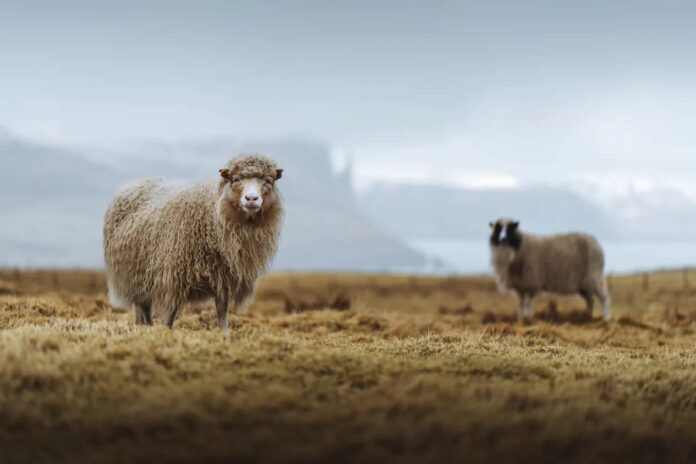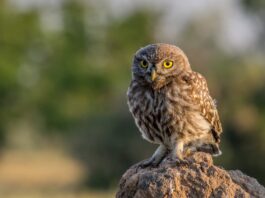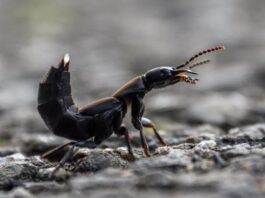We all know that sheep is one of the animals that produce wool for our daily needs in winter. However, there are many more animals that produce wool that we use to make clothes and other essentials every day. These fluffy animals sacrifice their wool every year so that we can be warm in winter. In case you want to know about the animals that produce wool for us, we have 10 best of them to show you today. So check out our list down below and let us know which one you are familiar with the most.
1Alpaca

Origin: South America
Alpaca is one of the animals that produce wool with great quality and softness for clothing purposes. Alpaca fleece is a lustrous and silky natural fiber that is similar to sheep’s wool but warmer and less prickly. Since alpaca fleece bears no lanolin, the fleece is hypoallergenic which is super comfortable and convenient.
Alpacas are sheared once a year in spring, and their fiber is perfect for knitters since it is soft. The fiber from alpacas is very similar to wool, and it is ideal for making blankets, sweaters, hats, gloves, scarves, and more. More than that, the fiber comes in more than 52 natural colors which are simply perfect for clothing and bedding textiles.
2Angora Rabbit

Origin: Turkey
The one and only breed of rabbit that can be on the list of animals that produce wool is no other than Angora Rabbit. It is a fluffy domestic rabbit that is bred for the long fibers of its coat. Their wool is Angora Wool, and people gather the wool by shearing, combing, or plucking.
Angora Wool is soft and low in micron count which is exactly what knitters refer to as a halo (fluffiness). This type of rabbit produces coats in a variety of colors, mainly black and white. Fiber from the rabbit is normally blended with wool to give the yarn the elasticity. The farmers comb these rabbits every three months to retrieve their hair, and it is used to make sweaters, gloves, and scarves. Sometimes people combine angora wool with sheep wool to make it more durable.
3Border Leicester

Origin: United Kingdom
It is a British breed of sheep that produce polled and long wool while providing meat at the same time. Border Leicester is large but docile, and they also produce good milk as well. The unique thing about this sheep breed is that they are normally shorn twice a year when the wool reached around 100 mm in length.
The wool from Border Leicester is soft and lustrous with a staple formation that is round in form. Their wool is used for medium to heavy-weight garments and is prized by spinners because of the crimp and luster. The sheep are not only the animals that produce wool but also high-quality meat as well.
4Camel

Origin: North Africa, Middle East, Central Asia
Camels are less known for their wool because they are not as fluffy as sheep or oxen. Actually, camel hair can also produces wool as well; and camel hair is most commonly produced in Inner Mongolia and other areas in China. Camels are one tough animals that can travel long distances without food and water, and they provide great benefits to nomadic people. They are used for transportation, milk, wool, and even meat, especially in the desert.
Camels are sheared once a year, and Mongolian people use camel hair to produce fine textiles like scarves, gloves, and jackets. Camel wool is lightweight and smooth, and its unique properties allow for shaping and tailoring making it a very popular fabric. Finished camel wool products provide the warmest insulating qualities yet are very soft on the skin. No doubt why they are very valuable.
5Corriedale

Origin: New Zealand
Not different from Border Leicester, Corriedale is also the dual-purpose sheep breed that provides both wool and meat. This type of sheep is large in size, and they have a beautiful appearance. Corriedale produces thick stapled and bulky fleece which is preferred by many hand spinners because of the unique combination of desirable qualities. As a dual-purpose animal, sheep are very popular among farmers throughout the world for both high-quality meat and wool production.
6Goat

Origin: India, North Pakistan
The most famous wool from goats is cashmere, which is a fiber people obtain from cashmere goats and other types of goats. Cashmere goats produce a double fleece that consists of a fine and soft undercoat mingled with a straighter and much coarser outer coating of hair. Cashmere is finer, stronger, lighter, softer, and three times more insulating than sheep wool.
Pure cashmere can be dyed and spun into yarns and knitted jumpers, hats, gloves, socks, and other clothing. People also wove cashmere into fabrics then cut and assembled into garments such as outer coats, jackets, trousers, scarves, blankets, and more. There are four types of fiber or wool from goats including raw, processed, virgin, and recycled. Nowadays, clothing and textiles made from goat’s wool are used worldwide.
7Llama

Origin: South America
Llama is a very close relative to Alpaca, and it is common as a meat and pack animal by Andean cultures. People also used fiber from llamas for clothing and textile purposes as well. Llamas are generally clipped once a year, and they produce coarse wool that includes stiff guard hairs. Llama fiber is very soft, and it is naturally lanolin free.
Also, llamas have a fine undercoat that is ideal for handicrafts and garments. While the coarser outer guide hair is for rugs, wall hangings, and lead ropes. The fibers from llamas come in many different colors from white to gray to reddish-brown, brown, dark brown, and black.
8Merino

Origin: Extremadura, Spain
Merino is one of the breeds of sheep that have a high price for its wool. Merino provides some of the finest and softest wool of any sheep because of its excellent color with dense texture. Also, Merino wool is a heavy fleece that is ideal for clothing since the wool is soft on the skin.
There are different types of Merino wool including strong wool, medium wool, fine wool, superfine wool, and ultra-fine wool. Ultra-fine wool is suitable for blending with other fibers such as silk and cashmere, and the price is also high. The interesting thing about Merino is that they need regular shearing by their owners. This type of sheep must be shorn at least once a year because their wool does not stop growing. If not so, the overabundance of wool can cause heat stress, mobility issues, and even blindness.
9Musk Oxen

Origin: Greenland, North America
Musk Oxen aka Musk Ox is very popular for its thick coat along with its strong odor during the seasonal rut. The musk ox produces soft inner wool called qiviut with an amount of around 5 pounds each year. Also, a musk ox sheds its undercoat each spring by rubbing itself against anything it can find. People often collect the undercoat from them by following the herd during shedding season.
In captivity, the wool from the ox is combed out in a thick blanket. The fascinating thing is that qiviut is warmer than sheep’s wool, and it is as soft as cashmere. The great part is qiviut is so special due to the fact that it does not shrink in water at any temperature. People use wool from musk ox to make scarves, hats, gloves, and other fine textiles.
10Sheep

Origin: Asia, Western Europe
Sheep are the animals that produce wool the most, and there are 3 major types of sheep’s wool including fine wool, medium and coarse wool, and hair type. There are also many other types of sheep that produce wool, and we also include some in our list as well. The wool from the sheep is usually called fleece, and different sheep provide different types of wool for clothing.
Long wool sheep produce the heaviest fleeces which are ideal for carpets and tapestries. As for medium wool sheep, people use their wool for blankets, sweaters, and socks due to their lightest weight. The greatest value of wool is from fine wool sheep, and garments from fine wool are less likely to itch. Sheep are one of the oldest domestic animals, and they provide us with not just wool but meat, milk, and more.
Related Post: Animals With Incredible Horns You Should See




